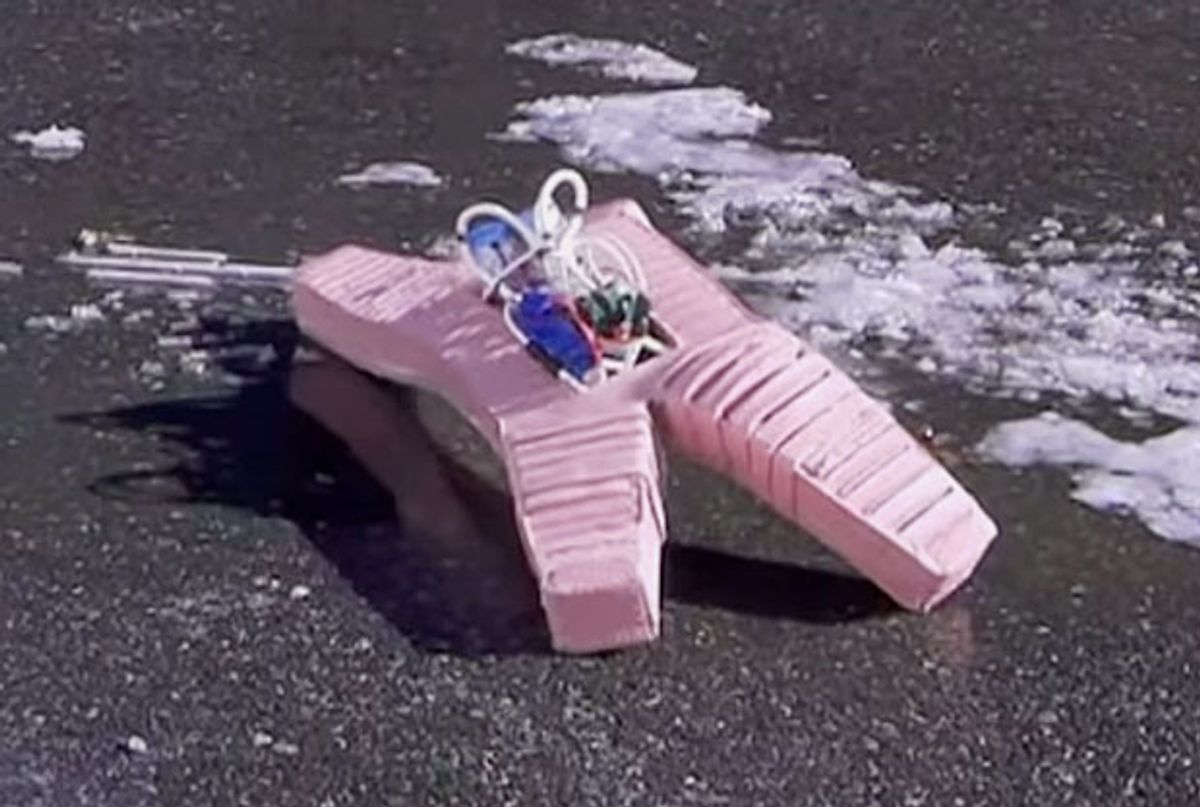A few years back, we wrote about this squishy little air-powered legged robot from Harvard with no electronics or moving parts that you could beat down with a hammer and it would still
try and kill you
keep walking. The 2011 version of the robot was tethered to external air compressors, but the newest one brings all of its power and control onboard, and you can no longer kill it with fire. Uh oh.
The basic design of this robot, developed at Professor George M. Whitesides' lab at Harvard and described in a paper in the journal Soft Robotics, is mostly similar to the one from a few years ago, although being untethered is a very big deal, since it's a requirement for a robot to be able to do something useful outside of a lab.
The silicone rubber that the robot has been made out of is extraordinarily tough, such that it can continue to function in subzero temperatures (tested down to -9 degrees Celsius), 40 km/h winds, puddles of up to 5 centimeters of water, and 3,000 Kelvin methane flames for up to 50 seconds. It's also resistant to acid, for whatever that's worth.
This version is completely autonomous, in that it'll run quite happily by itself for about 2 hours before it runs out of battery power. It doesn't include active sensing or much of a brain, but you could turn it into a surveillance platform by (literally) sticking a GoPro on it with a bunch of electrical tape.
The robot can adopt one of several different gaits to move in a straight line or turn, and flat out, it'll zip along at up to 18 meters per hour (0.5 centimeters per second). Pressurized internally to 20 psi, the robot is quite strong, and has no trouble lifting payloads of up to 3.4 kilograms, or doing a static hold of 8 kg.
Being self-contained does, at this point, involve a backpack full of miniature air compressors, battery, valves, and a controller, and all of these things are decidedly non-soft, which makes them destructible. So, the robot can survive fire and ice and water and being run over by a car, as long as those things just happen to one of its limbs, and not the electronics that it's carrying around on its back. The total cost of all of the stuff comes out to just $1,111.
As we've speculated before (in reference to printable robots), there may be ways to remove many if not most of this hard and fragile stuff to make the robot even more resilient.
One weakness of the design presented here is the sensitivity of the exposed, rigid components at the center of the robot (compressors, valves, controller, batteries) to the conditions that typically challenge rigid robots (blunt impacts, applied pressures, and harsh environmental conditions). It may be possible to alleviate this weakness by distributing the rigid components over the body of the robot and encasing them in the soft body material. Another, more technically challenging option is to replace the rigid components with soft counterparts. This approach, however, requires significant breakthroughs in the development of soft electronics, batteries, and pumps. One promising option is to use passive soft components wherever possible (e.g., passive addressable valves).
Maybe those electromechanical pumps could be replaced with chemical gas generators, or perhaps artificial muscles could pump hydraulic fluid between the limbs and body. But this is part of what we like about reporting on robotics research: it's possible to see the path that's being followed toward ever freakier, more advanced, versatile, and resilient systems, and within the next few years, we really are going to see robots that are indestructible.
[ Paper ] via [ New Scientist ]
Evan Ackerman is a senior editor at IEEE Spectrum. Since 2007, he has written over 6,000 articles on robotics and technology. He has a degree in Martian geology and is excellent at playing bagpipes.





